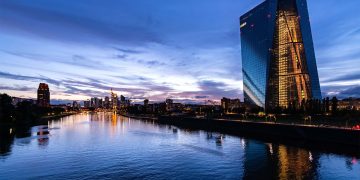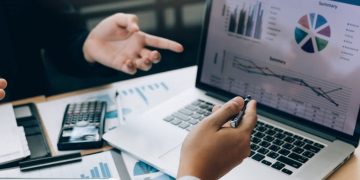Introduction
In late 2024, a striking development caught the attention of global commodity traders and investors: European coastal Automatic Identification System (AIS) heat-maps revealed a significant reduction in container ship movements during the fourth quarter. This unexpected decline in maritime shipping activity foreshadowed a consequential ripple effect that reached far beyond European waters. Specifically, Chinese steel stocks experienced a pronounced downturn, with prices falling by 8% as inventories swelled under the pressure of slowing exports. The core puzzle arises: how did diminished European shipping traffic forecast such a sharp impact on Chinese steel markets? This article delves into the underlying data and explores the interconnectedness of European shipping patterns, Chinese manufacturing, and global commodity price dynamics.
Key Data and Background
AIS technology provides real-time location and movement data of vessels, offering a unique lens to track shipping volumes and supply chain health. In Q4 2024, AIS heat-map analyses of European coastal waters—particularly around key hubs such as Rotterdam, Hamburg, and Antwerp—indicated a clear contraction in container ship density and traffic frequency compared to previous quarters.
(See Figure 1: European Coastal AIS Heat-Map Comparison Q3 vs Q4 2024)
This decline reflects several intertwined factors. European manufacturing orders contracted amid rising input costs and subdued consumer demand, reducing the need for inbound raw materials and outbound shipments. Additionally, ongoing energy price volatility in Europe heightened operational costs for shipping companies, further curtailing route utilization.
This maritime slowdown directly affected China’s steel sector. China, the world’s largest steel producer and exporter, relies heavily on European demand to move its inventory. Reduced shipments from European ports meant that steel producers faced mounting inventories as export volumes declined. Consequently, Chinese steel prices dropped approximately 8% during the same period, signaling distress in balancing supply with softening global demand.
(See Figure 2: Chinese Steel Price Index and Inventory Levels Q4 2024)
This data underscores the growing fragility of global supply chains. European shipping patterns, often seen as a barometer of economic health, reveal demand contraction signals with far-reaching implications for commodity markets on the other side of the world.
Cross-Market Impact
The reduction in European shipping activity has triggered a chain reaction affecting multiple markets. First, European manufacturing orders, which form a critical source of global industrial demand, showed a downward trajectory. This decline is particularly relevant for sectors reliant on steel-intensive production, such as automotive and construction. Lower order volumes meant fewer imports of raw materials and components, exacerbating the slowdown in maritime shipments.
Secondly, China’s export sector felt the squeeze. With European ports receiving fewer containers, pressure mounted on Chinese exporters to find alternative markets or accept lower prices. The steel sector, already grappling with domestic overcapacity and regulatory tightening, saw inventory accumulation intensify. This supply glut pressured steel prices downward, undermining profit margins and investment sentiment.
Furthermore, the repercussions extended to currency markets. The Chinese renminbi experienced increased volatility amid export uncertainties and capital flow shifts. As European demand softened, currency fluctuations reflected shifting trade balances and investor risk perceptions.
Historical parallels offer valuable insight. The 2015–2016 period saw a similar dynamic when European demand contraction led to steel price declines in China, although that episode was more sharply driven by global trade tensions and oversupply. The current situation differs due to energy price volatility and supply chain restructuring post-pandemic, creating a more nuanced set of risks.

These linked market movements emphasize the tightly woven nature of today’s global economy, where regional demand shifts manifest as cross-continental price and currency impacts.
Divergent Expert Views
Interpretations of the 2024 Q4 shipping slowdown and steel price dip vary among experts, reflecting broader debates on cyclical versus structural market changes.
The European Shipping Association characterizes the AIS heat-map data as indicative of a “cyclical adjustment.” They argue that seasonal fluctuations and short-term energy cost spikes naturally modulate shipping activity, suggesting the decline is temporary. Their stance emphasizes resilience in European industrial demand, anticipating a rebound as market conditions stabilize in early 2025.
Conversely, prominent Chinese market analysts see deeper structural shifts at play. They interpret the data as a reflection of “demand structural change,” pointing to evolving consumption patterns in Europe driven by energy transition policies and technological shifts away from heavy manufacturing. This camp warns that the diminished shipping activity signals a prolonged period of reduced Chinese export dependency on European markets, necessitating strategic repositioning for steel producers.
Major financial institutions such as Goldman Sachs and Morgan Stanley incorporate these viewpoints into their commodity outlooks. They highlight the dual risks of cyclical softness compounded by longer-term structural transformations, advocating cautious exposure to steel equities and related sectors.
Adding a contrarian perspective, some economists challenge traditional supply-demand frameworks. Nobel laureates in economics suggest that shifts in global trade flows and digitalization of manufacturing may decouple historical commodity price linkages, making past analogies less predictive. This view encourages market participants to consider a broader array of factors including geopolitical risks and climate policy impacts when assessing steel market prospects.
Future Outlook and Strategy
Looking ahead to 2025, the steel sector’s trajectory depends heavily on how European demand and global shipping trends evolve.
In an optimistic scenario, energy price normalization and supply chain adaptations will revive European manufacturing orders, increasing shipping volumes and alleviating inventory pressures in China. Steel prices could stabilize or rise moderately, supported by renewed infrastructure investment linked to green transition initiatives.
A more cautious, neutral outlook foresees ongoing volatility. Structural demand shifts will temper growth, but strategic diversification by Chinese steel producers and gradual market adaptation will mitigate downside risks. Investors should monitor key indicators such as European manufacturing PMIs, AIS shipping volumes, and Chinese export data to gauge momentum.
The pessimistic scenario envisions prolonged structural demand decline in Europe, coupled with intensified global trade realignments. This outcome would pressure Chinese steel prices further, potentially leading to industry consolidation and increased volatility in currency markets. Risk-averse strategies emphasizing liquidity preservation and exposure to diversified commodities would be prudent.
For investors and market participants, tracking three critical metrics can enhance strategic positioning: AIS heat-map shipping density, European industrial order volumes, and Chinese steel inventory levels. These data points offer early warning signals and facilitate proactive decision-making.
Conclusion
The 2024 Q4 decline in European shipping activity, as revealed by AIS heat-maps, proved a valuable predictor of Chinese steel stock price dips and broader market adjustments. This interplay highlights the growing interdependence between regional shipping patterns, manufacturing demand, and commodity pricing in a globally integrated economy.
Will these trends mark a temporary cycle or herald a more fundamental transformation in global trade dynamics? As the world navigates energy transitions and evolving consumption patterns, this question remains critical for investors, policymakers, and industry leaders alike.




































